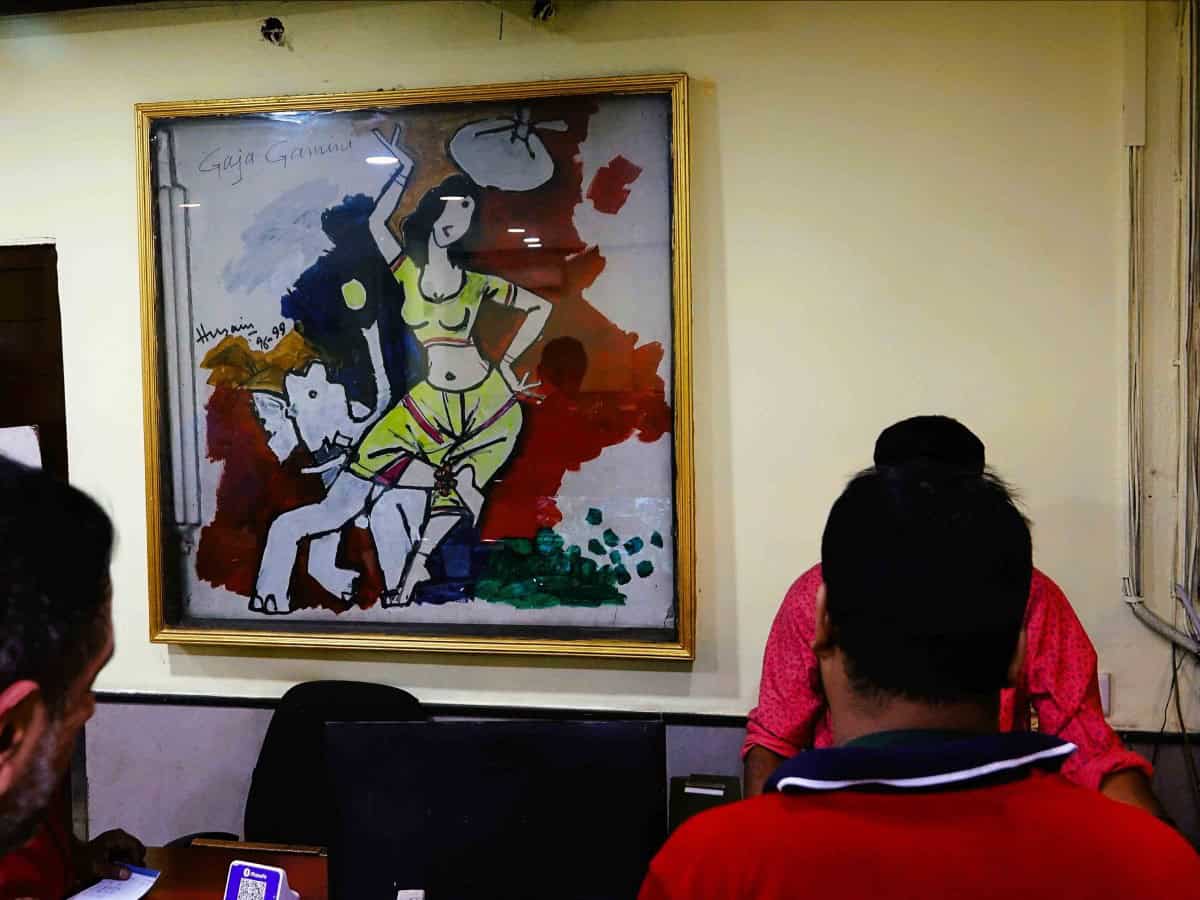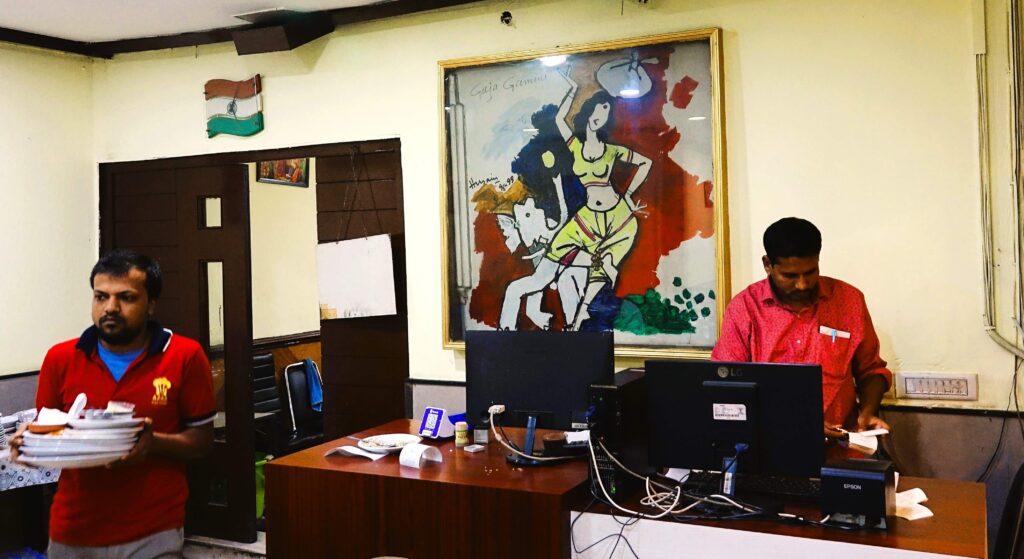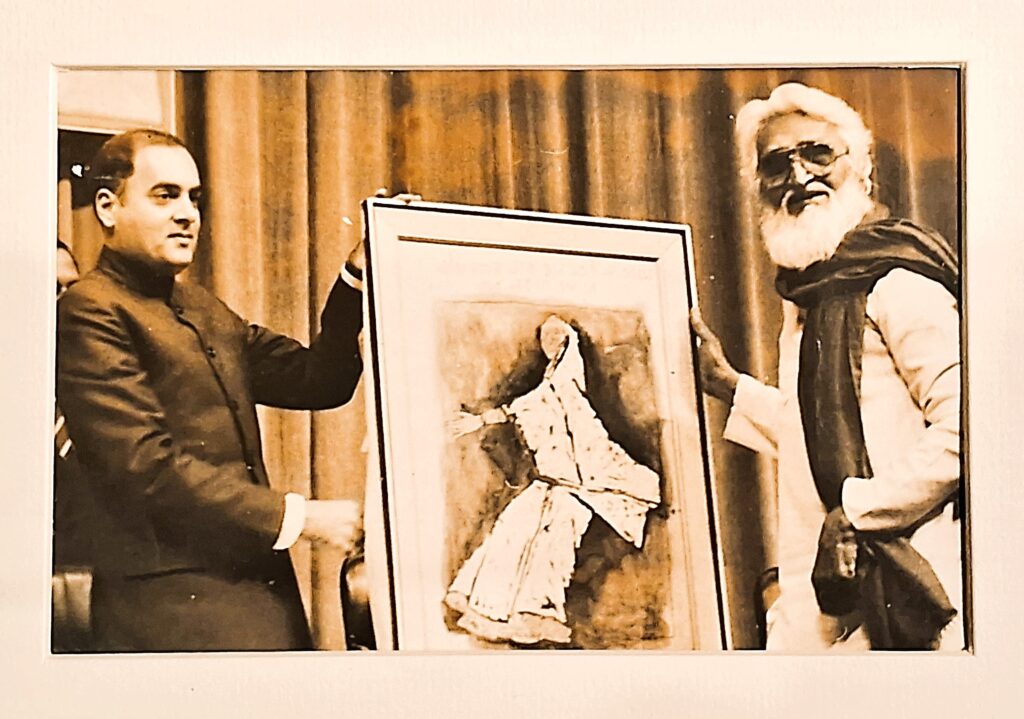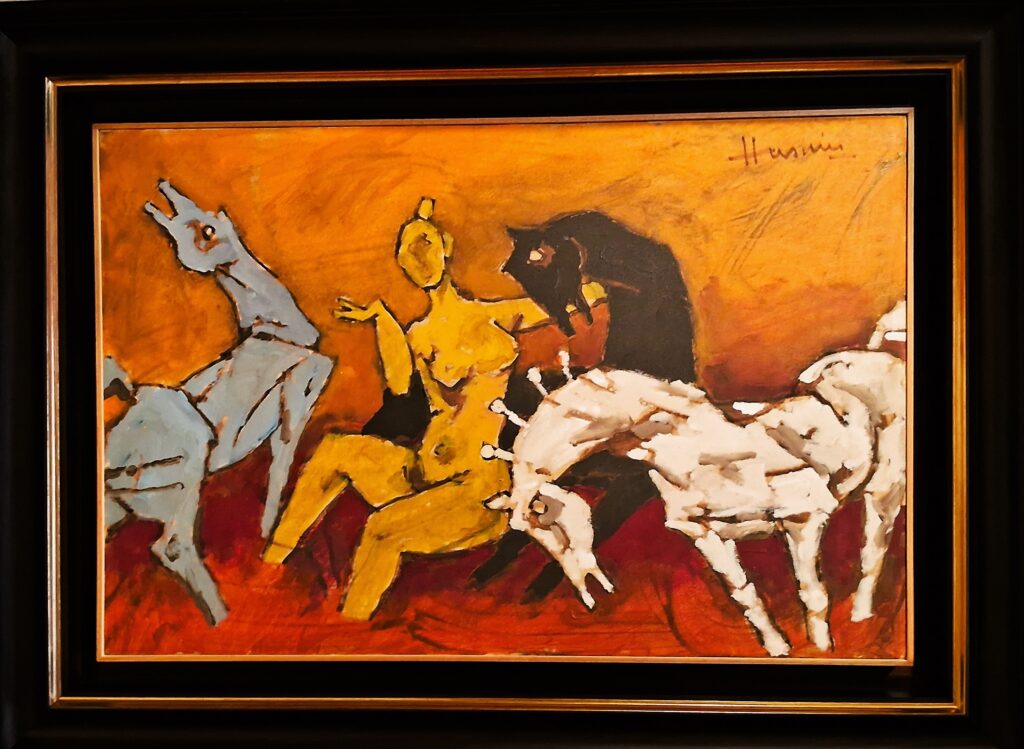
Amidst the bustling lanes of South Kolkata, where food and culture converge, a quaint restaurant holds a piece of artistic history on its bare walls. The Azad Hind Dhaba, famed for its hearty snacks and meals, has become synonymous with one of India’s greatest modern artists, M F Husain. The iconic painting Gaja Gamini, which depicts a graceful dancing woman set against a fiery red background with a white elephant’s trunk held aloft, stands as a vivid testament to the late painter’s genius. A maverick who marvels at his unique thoughts depicting them with strokes of the brush, pen, and pencil.
A chance encounter turned masterpiece

It was an ordinary afternoon in 1999 when M F Husain (at the age of 85) already a legend in Indian art, entered the decrepit Dhaba, where he often came to relish his favourite “Kadak chai” and soak in the simple joys of life. On this particular visit, he decided to breathe life into a black-and-white sketch he had left unfinished three years earlier. With deft strokes and bold colours, he transformed the wall into a masterpiece that has since been admired by countless visitors. I was recently in Calcutta (Kolkata) in the last week of November chasing the disappearing Trams, Yellow Taxi, and Hand-drawn rickshaws and did not want to miss the famous café. I visited the Dhaba about 15 years ago and today it has metamorphosed into a modernised Hotel-Café with a larger entity having an AC section and a non-AC section. But the masterpiece by M F Husain remains unchanged, the frame embedded firmly onto the wall behind the cash counter.
Essence of Gaja Gamini

The painting embodies Husain’s fascination with grace and movement. Gaja Gamini, literally meaning “one with the walk of an elephant,” evokes the majestic poise and rhythm of a dancer. The vibrant red background pulsates with energy, while the elephant symbolizes wisdom and strength. Together, they tell a story of harmony, beauty, and timelessness—qualities that define Husain’s complex composition. Yes, says A S Francis who was at the restaurant to appreciate how Madhuri Dixit was the muse of legendary painter M F Husain. The Artist and the actress worked together on the 2000 film Gaja Gamini, which Husain directed. The actress Madhuri Dikshit was his muse and he incorporated her in many of his paintings and even made a movie appreciating the beauty of a woman. Gaja Gamini Story by M F Husain is his meditation on the mystery of a woman.
Wall that defied controversy
In 2006, when controversy engulfed Husain over his depictions of Hindu gods, many public spaces distanced themselves from his work. But the owner of the hotel cafe never considered removing Gaja Gamini from his wall. “It never crossed my mind. No one even asked me to,” he says. The painting remains untouched, surrounded by other motifs and clutter that are usually associated with restaurants, symbolizing the coexistence of art, culture, and faith. The painting stands bold and beautiful for those who can appreciate art in its purest form.
A living legacy
Today, the Azad Hind Dhaba stands not just as a culinary landmark but also as a shrine to Husain’s genius. The painting has become a silent witness to the ebb and flow of time, much like its creator, who observed the world with a keen and compassionate eye. Every visitor who stops to admire the wall finds himself/herself drawn into the magic of Husain’s artistry. It is a reminder of how great art transcends its medium, sparking conversations and emotions long after the artist is gone.
Celebration of Talent

M F Husain’s genius lies not only in his mastery of technique but also in his ability to touch hearts. The wall at Azad Hind Dhaba is more than just a piece of art—it is a story, a memory, and above all, a testament to the power of creativity to inspire and endure.
So, the next time you visit the Dhaba, take a moment to gaze at Gaja Gamini. In its vibrant colours and dynamic lines, you’ll see not just a painting but the spirit of a man who lived to create, connect, and celebrate life in all its forms.
Maqbool Fida Husain, fondly known as M F Husain, was one of India’s most celebrated modern artists. He is often referred to as the Pablo Picasso of the Indian landscape. Husain’s work gained international acclaim for its unique portrayal of Indian culture, mythology, and history, often through fragmented forms and vibrant colours. However, his depictions of Hindu deities in unconventional ways also sparked controversy, leading to court cases and exile in his later years.
Apart from his art, Husain was known for his eccentricities. He famously preferred to walk barefoot, even in formal settings, a habit he claimed connected him to the earth and his creative spirit. He often dressed in simple white robes and carried his paintbrushes everywhere. His unconventional habits and flamboyant personality added to his mystique.
Husain passed away on June 9, 2011, in London, but his legacy lives on, influencing generations of artists and showcasing the dynamic interplay of tradition and modernity in Indian art.

